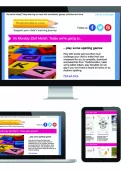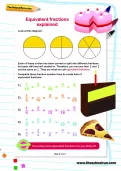Important update from TheSchoolRun
For the past 13 years, TheSchoolRun has been run by a small team of mums working from home, dedicated to providing quality educational resources to primary school parents. Unfortunately, rising supplier costs and falling revenue have made it impossible for us to continue operating, and we’ve had to make the difficult decision to close. The good news: We’ve arranged for another educational provider to take over many of our resources. These will be hosted on a new portal, where the content will be updated and expanded to support your child’s learning.
What this means for subscribers:
- Your subscription is still active, and for now, you can keep using the website as normal — just log in with your usual details to access all our articles and resources*.
- In a few months, all resources will move to the new portal. You’ll continue to have access there until your subscription ends. We’ll send you full details nearer the time.
- As a thank you for your support, we’ll also be sending you 16 primary school eBooks (worth £108.84) to download and keep.
A few changes to be aware of:
- The Learning Journey weekly email has ended, but your child’s plan will still be updated on your dashboard each Monday. Just log in to see the recommended worksheets.
- The 11+ weekly emails have now ended. We sent you all the remaining emails in the series at the end of March — please check your inbox (and spam folder) if you haven’t seen them. You can also follow the full programme here: 11+ Learning Journey.
If you have any questions, please contact us at [email protected]. Thank you for being part of our journey it’s been a privilege to support your family’s learning.
*If you need to reset your password, it will still work as usual. Please check your spam folder if the reset email doesn’t appear in your inbox.
How to help your auditory learner

What are learning styles?
Please note that the learning styles theory has been questioned by neuroscientists and educational experts and many teachers have moved towards the use of other, more evidence-based, methods in the classroom. This article is intended to give an overview of the theory as it may still be mentioned during your child's time at primary school.
Children learn in a variety of different ways, but some have a definite preference for a certain type of learning. The most widely known learning style theory was developed by Neil Fleming, a New Zealand teacher, in 2001. His VAK model theorised that children tend to fit into one of three learning styles: visual (learning by sight), auditory (learning by listening) or kinaesthetic (learning by moving and doing).


Start a unique learning programme!
- Weekly programme for each school year
- Worksheets sent direct to your inbox
- Keeps your child's learning on track
What defines an auditory learner?
Auditory learners are people who need to hear or listen to a concept in order to understand it. They usually have a knack for learning by rote, with a knack for remembering names, dates and trivia. They’re good at explaining things to other children, but may find it harder to follow written instructions.
Is your child an auditory learner?
Often, the biggest indication that your child is an auditory learner is if they love talking.
Auditory learners tend to be real chatterboxes, and enjoy talking to themselves or providing a running commentary on what they’re doing. They like being read to, but may be less keen on reading themselves, and often continue to read out loud long after other children have mastered the art of reading silently. Frequently musical, they may sing, hum or whistle to themselves, and enjoy performing. They’re good at interpreting the expression and intonation in other people’s voices, but can be distracted by background noise.
Does auditory learning help with spelling and times tables?
If your child is an auditory learner, chances are they will find it a relative breeze to master spellings and multiplication tables.
Phonics teaching particularly suits auditory learners, as it breaks words down into their individual sounds; the Look, Say, Cover, Write, Check method of learning spellings also appeals, as saying the word out loud helps to reinforce the learning. Auditory learners also tend to do well at learning by rote, which can make times tables – and also learning song words or school play scripts – comparatively easy.
Top five learning strategies for auditory learners
- Encourage your child to read aloud to themselves – or, in a classroom situation, to mouth the words silently – so that the information sinks in.
- When memorising information, get your child to repeat it over and over out loud, rather than trying to learn by looking at words or figures on the page.
- Encourage your child to ask their teacher to explain a task verbally, as well as or instead of relying on reading the written instructions.
- Summarise the main points of learning verbally before starting to write them down. Small-group discussions are great for this, but in a quiet classroom, your child can say them to themselves under their breath.
- Use repetition to remember key facts, or make up songs or riddles about them. Clapping or beating out a rhythm can also be helpful.
Helping your auditory learner at home
Homework is rarely a time of quiet for an auditory learner! Encourage them to talk to themselves while working: reading aloud and repeating facts can help them get to grips with a task.
Ask questions about their work, and get them to tell you what they're planning to write before they put pen to paper.
Use resources such as audiobooks and online videos to research topic work, and help them to learn spellings and times tables parrot fashion by reciting them out loud.
For extended writing tasks, try recording your child talking about their ideas first, and then playing them back. Auditory learners also tend to like working in groups so they can share ideas, so consider asking a friend or sibling to join in with homework time.








